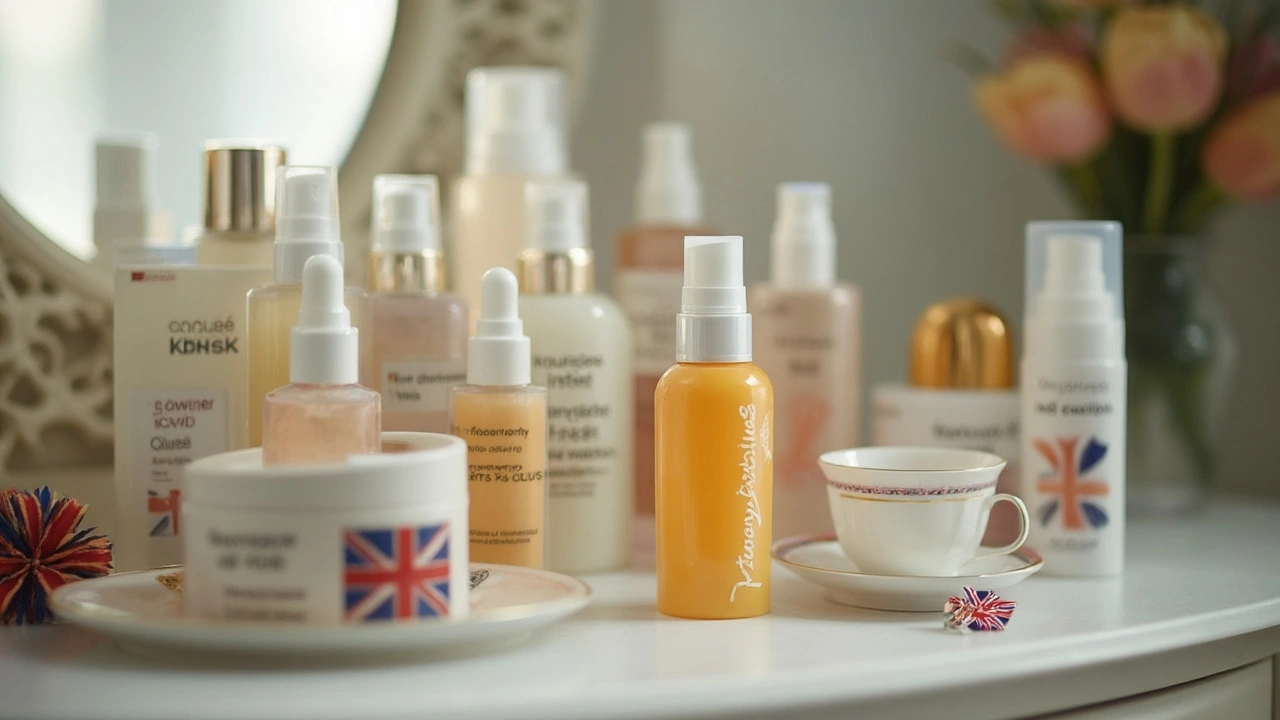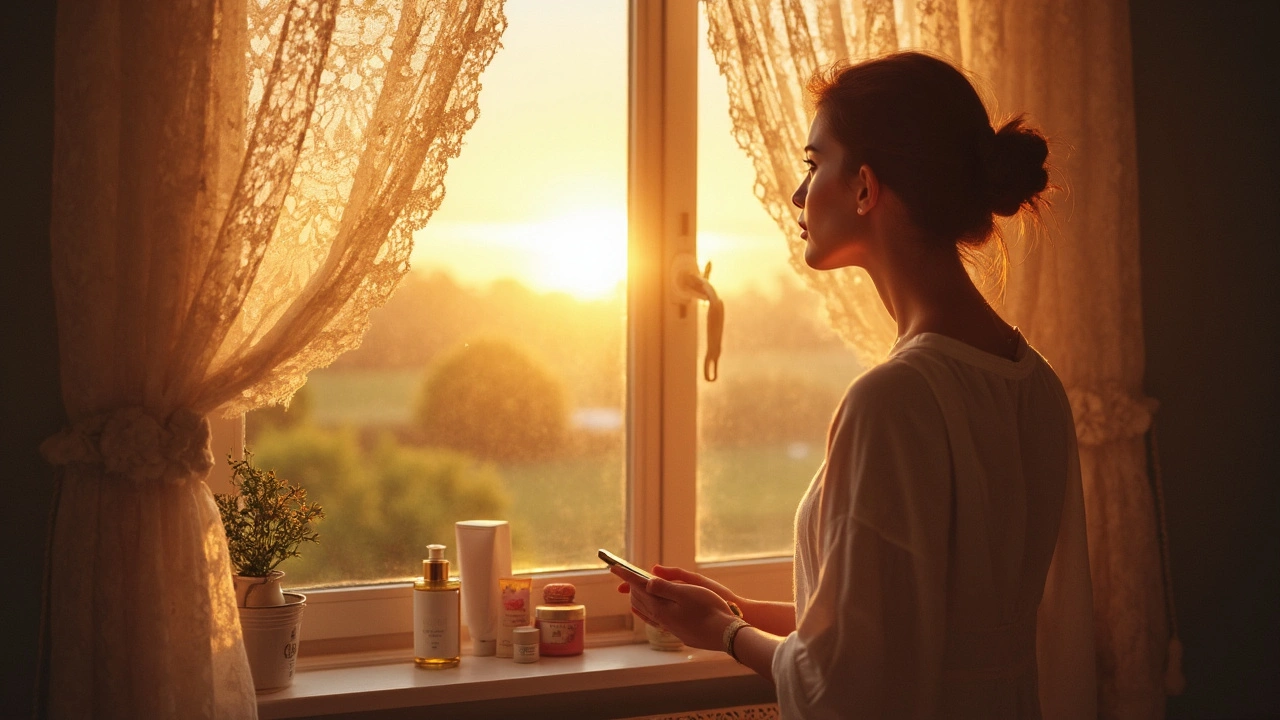Hydroquinone—ever heard of it? If you’re into skincare, it’s probably popped up on your radar, especially if you're tackling dark spots or uneven skin tone. But what’s the big deal? Hydroquinone is a go-to ingredient for lightening skin, but it’s not a simple cream you just slap on and forget about, especially when the sun's involved.
So, let's kick off with the basics. You see, hydroquinone works by inhibiting an enzyme in the skin that helps produce melanin—our skin's natural pigment. Less melanin means lighter spots. Sounds pretty great, right? But, there's a catch! When using hydroquinone, you’ve got to be extra cautious with sun exposure. The sun can counteract all your hard work and even cause more skin issues. Sounds like a bummer, huh?
Before you panic and toss out those creams, there are practical ways to use hydroquinone safely without waving goodbye to sunshine altogether. Stick around, and we’ll go through some handy tips on how to keep your skin glowing and protected.
- Understanding Hydroquinone
- Hydroquinone and Sunlight Interaction
- Skin Protection Tips
- Building a Safe Skincare Routine
Understanding Hydroquinone
Alright, let’s get into what hydroquinone really is. Simply put, it's a skin-lightening agent often used to tackle those pesky dark spots and uneven skin tones that many of us try to cover up with makeup. The magic happens because hydroquinone blocks a particular enzyme called tyrosinase, which is key in melanin production. Less melanin equals lighter spots. Neat, huh?
How Hydroquinone Works
Think of hydroquinone as a bit of a 'shutdown button' for melanin. Normally, your skin makes melanin to protect itself from sun exposure, and that's where the color in those spots and patches comes from. By hitting pause on melanin production, hydroquinone helps lighten those areas.
Common Uses
Most folks turn to hydroquinone for:
- Hyperpigmentation: Those annoying dark spots that pop up after a breakout or too much sun.
- Melasma: Often called the 'mask of pregnancy,' which can cause brown or grayish patches, particularly on the face.
- Sun spots: Those are the little patches that seem to multiply as we age, usually due to too much sun exposure over the years.
But here's a heads-up—this isn't a quick-fix product. It can take weeks, sometimes months, to see noticeable results. Patience is key!
Fun Fact
Did you know that hydroquinone has been around for over 50 years? Yep, it's been one of the most reliable options for skin lightening for decades, hailed by dermatologists around the world. However, its use isn't without some controversy, as regulatory advice varies globally regarding its safety and potential side effects.
Hydroquinone is generally considered safe when used correctly, but if you’re thinking about starting a regimen, especially if you've got sensitive skin, maybe chat with a dermatologist first. Keeping an eye on your skin’s response is crucial to prevent any irritations.
Hydroquinone and Sunlight Interaction
So, you've got your hydroquinone cream and you're ready to lighten those pesky spots. But hold on! How does the sun fit into this equation? Well, sun exposure and hydroquinone aren't exactly best buddies. It's crucial to know the ins and outs of how they interact so you can protect your skin.
Hydroquinone basically stops new pigmentation from forming by blocking the enzyme needed to produce melanin. When you're using it, your skin becomes more sensitive to the sun. Imagine working hard to lighten your skin only to reverse or even worsen the process because you didn't stay out of the sunlight.
How the Sun Affects Hydroquinone-Treated Skin
When you apply hydroquinone, you're reducing your skin's natural defense against UV rays. This could lead not just to a return of those dark spots, but sometimes, it might make them darker. Being out and about without protection could even lead to skin irritation or other issues due to this increased sensitivity.
Users have often reported that complete sun avoidance while using this product is key to success. But let's be real—not getting any sun is almost impossible. Instead, we'll look at realistic strategies for protection.
Practical Tips for Staying Safe
- Apply hydroquinone at night to minimize sun exposure. Nighttime is your safest bet since the sun isn't a factor.
- During the day, slap on broad-spectrum sunscreen with an SPF of at least 30. Make it a daily habit, even if you're chilling indoors.
- Consider wearing a wide-brimmed hat or carrying an umbrella. Think of it as chic sun armor.
- If possible, limit your time outdoors when the sun's rays are the strongest—between 10 AM and 4 PM.
By understanding how hydroquinone and sun exposure interact, you can better protect your skin and ensure the effectiveness of your skincare efforts. Consider it a small trade-off for that spot-free glow you're aiming for.

Skin Protection Tips
Keeping your skin safe while using hydroquinone doesn’t have to be rocket science. Here are some practical tips that make a world of difference between fabulous skin and a facepalm moment.
Use Sunscreen Religiously
The basic rule—slather it on like your skin’s life depends on it. A broad-spectrum sunscreen with at least SPF 30 is non-negotiable. Make it a habit to apply every morning, no matter the weather. Even on cloudy days, pesky UV rays sneak through and mess with your skin treatment.
Timing is Your Friend
Apply hydroquinone products in the evening. Why? It gives the product time to work its magic overnight without worrying about the sun’s harsh rays. Plus, it fits right into your bedtime routine. Couldn't be easier!
Cover Up Smart
Think hats, sunglasses, and clothing. Seriously, a stylish hat goes a long way to block direct sunlight. Long sleeves might not scream excitement, but they're solid shields against unexpected sun exposure. Bonus—they add flair to your wardrobe.
Avoid Peak Sun Hours
If you can, stay out of direct sunlight from 10 a.m. to 4 p.m. This is when UV rays go into beast mode. If you must be outside, seek shade whenever possible.
Moisturize Like You Mean It
After using hydroquinone, your skin may become a bit drier than usual. It’s vital to nourish it with a good moisturizer. Look for non-comedogenic ones, so your pores stay clear and happy.
Talk to Your Dermatologist
Got questions? Ask! Your dermatologist can customize a skin care routine that aligns perfectly with your skin protection goals, ensuring you get the most out of your efforts.
Follow these tips and you’re not just treating your skin—you’re championing it. It’s all about being consistent and mindful, turning these practices into a no-brainer habit.
Building a Safe Skincare Routine
Alright, let's talk routines—because having a solid skincare routine is your best bet when working with hydroquinone. It's not just about slapping on a cream and hoping for the best. No, we need a game plan!
Timing Is Everything
You want to apply hydroquinone at night. Why? Because slathering it on before you hit the hay gives it all night to work its magic without interference from the sun. And remember, less is more. A small amount goes a long way.
Never Skip Sunscreen
When you're using hydroquinone, sunscreen is your best buddy. It’s non-negotiable. Go for a broad-spectrum SPF 30 or higher. Apply it every morning—even on cloudy days, indoors, or if you’re just near a window. And yes, reapply every two hours if you're outside.
Incorporate Antioxidants
Look for serums or creams with antioxidants like vitamin C or E. These ingredients give your skin extra protection and can help keep your skin looking fresh and vibrant. They work alongside hydroquinone by fighting off skin-damaging free radicals.
Moisturize
Hydroquinone can sometimes be drying, so make sure you're keeping your skin hydrated. Apply a good moisturizer both in the morning and at night to lock in moisture and maintain your skin’s barrier.
Track Your Progress
Keep an eye on your skin. Notice any changes? Maybe snap a weekly picture to really see the difference over time. This will help you see the effects and tweak your routine if needed.
| Step | Action |
|---|---|
| 1 | Evening: Apply hydroquinone to targeted areas |
| 2 | Morning: Apply broad-spectrum sunscreen |
| 3 | Add antioxidants to your routine |
| 4 | Moisturize daily |
| 5 | Monitor progress and adjust accordingly |
By sticking to these steps, you're going to give your skin the best chance to improve while staying healthy and protected. Always up for the challenge, skin? You got this!


Graham Holborn
Hi, I'm Caspian Osterholm, a pharmaceutical expert with a passion for writing about medication and diseases. Through years of experience in the industry, I've developed a comprehensive understanding of various medications and their impact on health. I enjoy researching and sharing my knowledge with others, aiming to inform and educate people on the importance of pharmaceuticals in managing and treating different health conditions. My ultimate goal is to help people make informed decisions about their health and well-being.